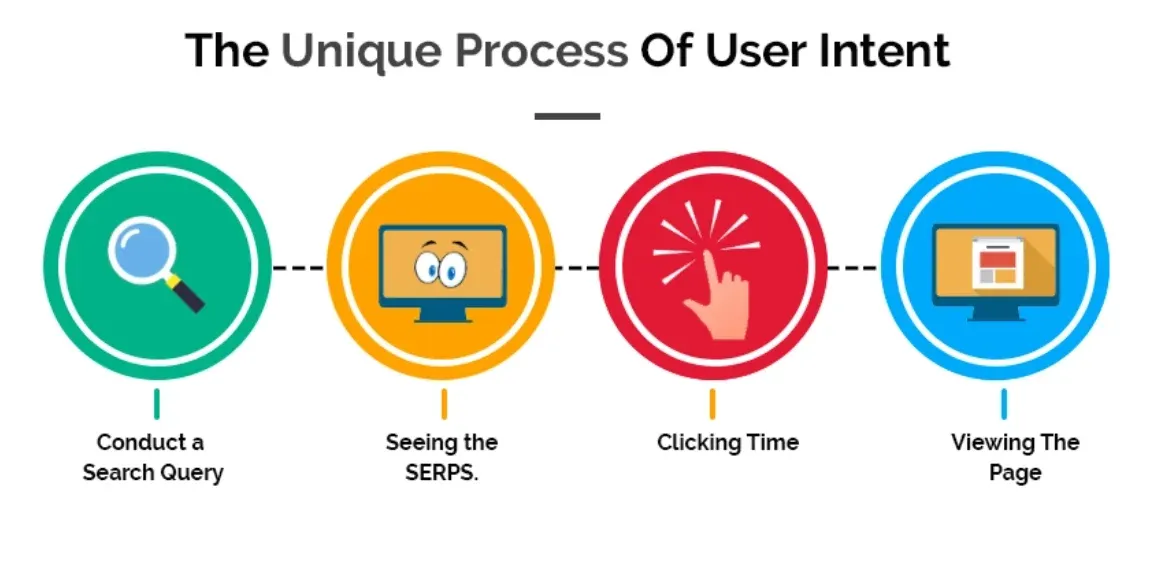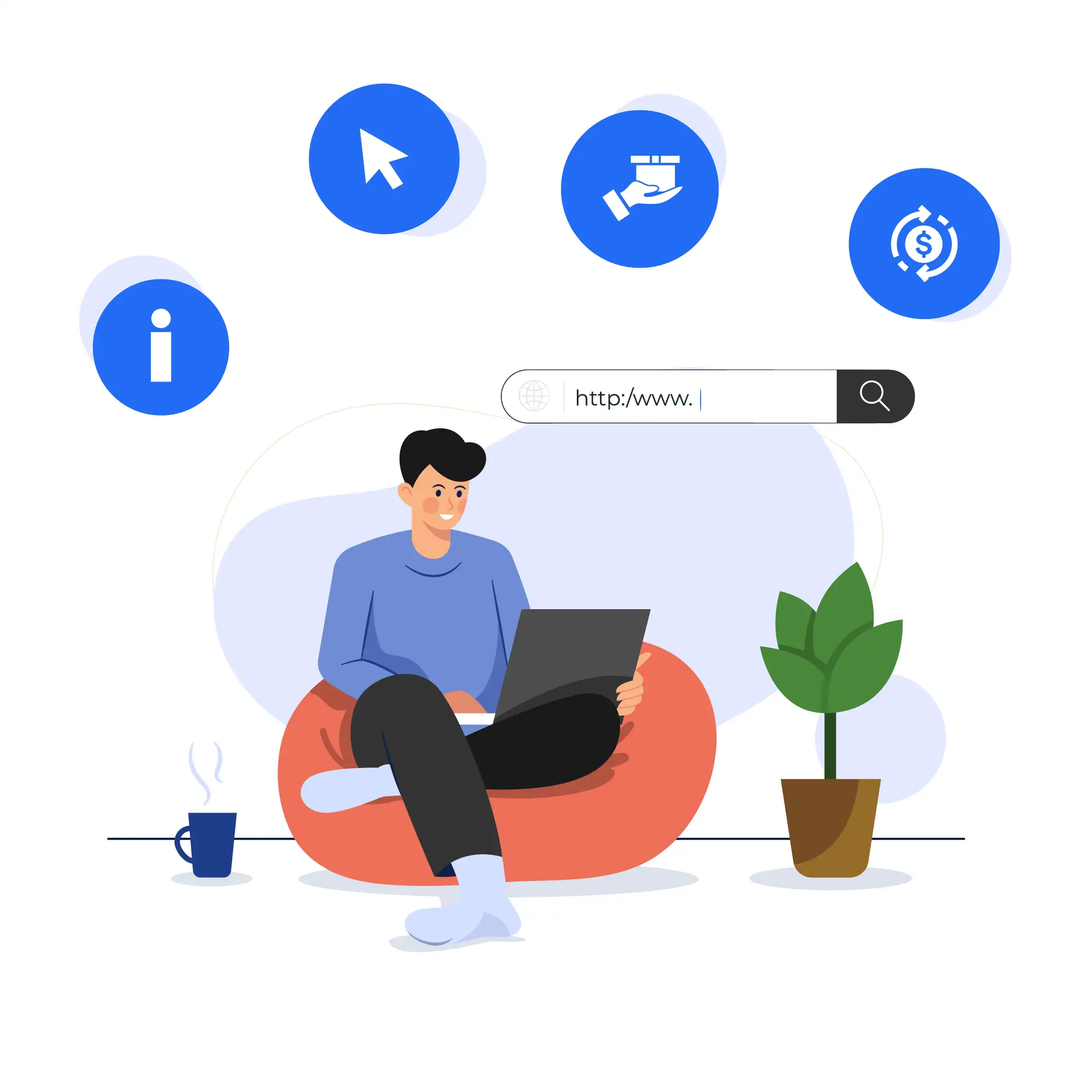What is User Intent?
User intent is the reason behind a user's search query. It refers to the intention of the user and the reason why they are searching for a particular keyword or phrase.
Understanding user intent is crucial for SEO, as it helps businesses create content that matches the user's search intent, leading to higher engagement, better user experience, and increased conversions.

Importance in SEO
User intent is essential in SEO, as it helps businesses create content that matches the user's search intent.
By creating content that aligns with user intent, businesses can increase their visibility in search engines, drive more traffic to their site, and improve their conversion rates.
Additionally, search engines use user intent to determine search rankings, making it crucial to understand and optimize for user intent.
Types of User Intent
There are four primary types of user intent, including:

Informational Intent
Informational intent refers to a user's search query for information or answers. Users with informational goals often use keywords such as "how to," "what is," or "why" in their search queries.
Navigational Intent
Navigational intent refers to a user's search query for a particular website or page. Users with navigational sense often use keywords that include the name of a brand, company, or website in their search queries.
Transactional Intent
Transactional intent refers to a user's search query when they are looking to complete a transaction or purchase. Users with transactional intent often use keywords such as "buy," "discount," or "deal" in their search queries.
Commercial Investigation Intent
Commercial investigation intent refers to a user's search query when researching a product or service before making a purchase decision.
Users with commercial investigation intent often use keywords such as "best," "reviews," or "compare" in their search queries.
Keywords and User Intent
Understanding the relationship between keywords and user intent is crucial for SEO.
By identifying the keywords that align with a user's search intent, businesses can create content that matches the user's intent and increases their visibility in search engines.
Tools such as Google Keyword Planner and SEMrush can help businesses determine user intent for specific keywords.
How to Determine User Intent
Understanding user intent is crucial for SEO and content marketing. By understanding the reason behind a user's search query, businesses can create content that matches the user's intent, increasing their chances of appearing in search results and driving more traffic to their site.
But how can you determine user intent? In this article, we'll explore several methods for determining user intent.

Analyze the Search Query
Analyzing the search query is one of the easiest ways to determine user intent. You can often determine the user's plan by looking at the specific keywords and phrases used in the search query.
For example, if someone searches for the "best laptop for gaming," they are likely looking for product reviews or recommendations, indicating an informational or commercial investigation intent.
Look at the Search Engine Results Page (SERP)
Another way to determine user intent is to look at the search engine results page (SERP) for the search query. The SERP can provide valuable insights into the user's intent based on the type of content ranking for that search query.
For example, if product pages and e-commerce sites dominate the SERP, the user likely has transactional intent. If the SERP includes a featured snippet or knowledge panel, the user may look for quick answers to a specific question.
Analyze User Behavior and Search Patterns
Analyzing user behavior and search patterns can provide insights into user intent.
For example, suppose a user clicks on multiple results on the SERP and spends a significant amount of time on each page. In that case, they are likely researching a product or service, indicating a commercial investigation intent.
If a user quickly clicks back to the SERP after visiting a page, the content likely didn't match their intent.
Use Tools and Analytics
Several tools and analytics can help determine user intent. Google Analytics, for example, can provide insights into the user's behavior on your site, including how long they stay on a page and what actions they take. Keyword research tools such as Google Keyword Planner and
SEMrush can provide insights into the types of keywords users are using and the intent behind those keywords. Other tools, such as Ahrefs and Moz, can provide insights into the types of content ranking for specific keywords and the meaning behind that content.
Conduct User Surveys
Conducting user surveys can provide valuable insights into user intent.
Businesses can better understand user intent by asking users about their search behavior and the reason behind their search query. Surveys can be conducted through email, social media, or on-site pop-ups.
Monitor Social Media and Online Communities
Monitoring social media and online communities can provide insights into user intent. By tracking conversations and comments about your industry or niche, you can gain insights into what users are looking for and the reason behind their search queries.
Online communities such as Reddit and Quora can provide valuable insights into the types of questions users are asking and the intent behind those questions.
User Intent and Strategies
User Intent and Content Strategy
Creating content that matches user intent is essential for SEO. By creating content that aligns with user intent, businesses can increase their visibility in search engines, drive more traffic to their site, and improve their conversion rates. Optimizing content for user intent involves understanding the type of user intent and creating content that meets the user's needs.
User Intent and Conversion
Understanding user intent is crucial for conversion optimization. By understanding the reason behind a user's search query, businesses can create targeted landing pages and call to action that matches the user's intent and increases their chances of conversion.
User Intent and SERP Features
Search engine results pages (SERPs) often include features such as featured snippets, knowledge graphs, and local packs, which can impact user intent. Businesses can increase their visibility and drive more traffic to their site by optimizing for user intent in SERP features.
User Intent and Local Search
Understanding local user intent is crucial for businesses with a physical location. By creating content that aligns with local user intent, companies can increase their visibility in local search results and drive more traffic to their site.
User Intent and E-commerce
Understanding user intent is crucial for e-commerce businesses. By creating content that aligns with user intent, e-commerce businesses can improve their product pages, drive more site traffic, and increase conversion rates.
User Intent and Voice Search
Voice search is becoming increasingly popular, and understanding user intent is crucial for optimizing voice search. By identifying the type of user intent behind voice search queries, businesses can create content that aligns with the user's needs and improves their chances of appearing in voice search results.
User Intent and Machine Learning
Search engines use Machine learning more frequently to understand and predict user intent. By analyzing user behavior and search patterns, search engines can better understand the user's meaning and provide more relevant search results.
Frequently Asked Questions (FAQs)
What is user intent in digital marketing?
User intent refers to the primary goal a user has when typing a query into a search engine or browsing the internet.
How does user intent affect SEO?
Understanding user intent helps in optimizing website content, enabling better alignment with searchers' needs and increasing the chances of higher search engine rankings.
What are the three types of user intent?
The three main types of user intent are informational, navigational, and transactional. Each type represents a different stage in the user's online journey.
How can marketers identify user intent?
Marketers can identify user intent by analyzing keyword phrases, search patterns, and user behavior data to understand the goals and needs of their target audience.
Why is user intent important for content creation?
User intent is crucial for content creation because it ensures that the content developed resonates with the target audience, addresses their needs, and ultimately drives engagement and conversions.

